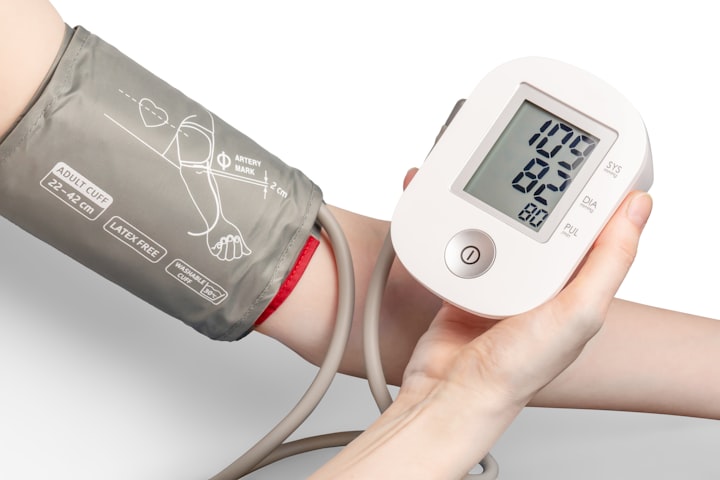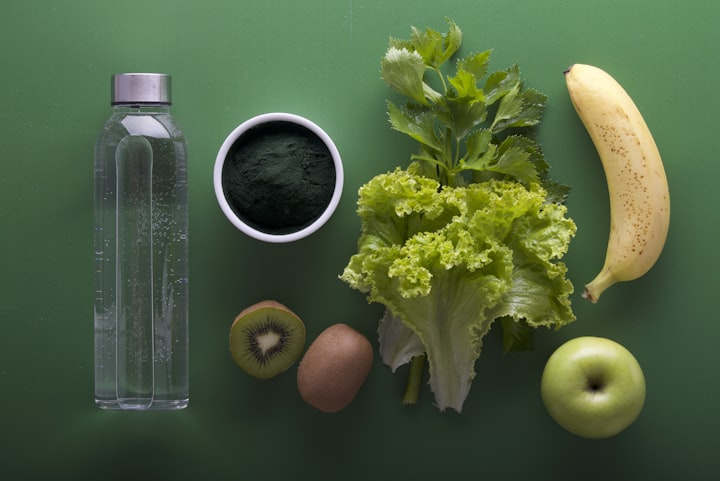The Best Foods to Eat When You Have High Blood Pressure
Your doctor may have recommended that you make lifestyle changes if you are diagnosed with hypertension or high blood pressure. The National Institutes of Health states that a healthy diet rich in nutrients and low in sodium can naturally lower blood pressure.

Your doctor may have recommended that you make lifestyle changes if you are diagnosed with hypertension or high blood pressure. The National Institutes of Health states that a healthy diet rich in nutrients and low in sodium can naturally lower blood pressure.
"Natural nutrients tend to be more packed with antioxidants than natural nutrients, which can get damaged when stored," states John Higgins MD, a professor in cardiovascular medicine at the UTHealth McGovern Medical School.
Dietary Recommendations include Prioritizing Unprocessed foods
The National Heart, Lung, and Blood Institute's Dietary Approaches To Avoid Hypertension, also known as the DASH diet, encourages eating whole fruits, vegetables, whole grains, low-fat dairy, lean protein like fish and poultry, and limits saturated fats, processed food, and sodium.
These nutrients are more easily absorbed by the body through whole foods than supplements. "Dr. Higgins states that there have been many instances when we have taken out one nutrient, such as omega-3 Fatty Acids, Vitamin C or Vitamin E. The concentrated pills have proven to be less effective than natural foods.
What is High Blood Pressure?
The following criteria are used to determine high blood pressure according to the American College of Cardiology's guidelines and the American Heart Association's published May 2018 in the Journal of the American College of Cardiology.
- Normal Less Than 120/80 millimeters mercury (mmHg).
- Elevated Systolic between 120-129 mmHg, diastolic lower than 80 mmHg
- Stage 1: Systolic between 130-139 mmHg and diastolic Zwischen 80-89 mmHg
- Stage 2: Systolic At least 140 mmHg, or diastolic At least 90 mmHg
Hypertensive crisis Patients need to be taken to the hospital immediately if they have signs of organ damage or need immediate medication changes.
A large study of over 9,000 participants, published May 2021 in The New England Journal of Medicine found that those with systolic blood pressures below 120mmHg had significantly lower rates of heart disease, heart attack, and stroke than those who were on a standard treatment plan. The goal was to get their systolic to less than 140mmHg.
Lifestyle changes recommended for high blood pressure
The American Heart Association encourages individuals with high blood pressure to:
- Consume a diet high in fruits, vegetables, whole grains, and fish, as well as skinless poultry.
- Limit alcohol
- Get more physical activity
- Lose weight
- They should reduce their sodium intake
- Stop smoking
- Stress
Your doctor should be consulted if you are concerned about your blood pressure. After a conversation with your healthcare provider, you can start to incorporate some of these foods into meals. You will be a delight to your taste buds and heart.
Potassium-Rich Bananas May Help Lower Blood Pressure
These easy-to-eat, portable fruits are low in sodium. They also contain potassium which can lower blood pressure. Stephanie Dean, RD of Baylor University Medical Center, Dallas.
Dean says that certain blood pressure medications can increase your need for potassium. It is possible that some people are deficient in potassium due to a change in diet. The muscles and heart rate can be affected by a lack of potassium.
Higgins states that bananas are full of fiber which helps you feel full.
Slices of bananas can be added to your favorite cereal or fruit salad to increase the amount of bananas in your diet. You can also grill or saute banana halves and then add a scoop of frozen yogurt.
2 Yogurt provides the calcium needed for normal blood pressure
Yogurt is a good source for calcium. An 8-ounce container of plain, lowfat yogurt contains 415 mgs according to the NIH. This is almost one-third off an adult's daily recommended intake of calcium. According to Harvard Health, high blood pressure can be caused by calcium deficiency.
Dean states that many people mistakenly associate calcium as something children need. However, the adult body still requires calcium-containing foods.
Yogurt can be used as a low-sodium snack. It's delicious straight from the container. However, you can add it to smoothies by adding a cup of yogurt and some diced pieces of your favorite fruits. Plain, unsweetened yogurt is best. Plain Greek yogurt is a great alternative to sour cream.
Salt-Free Seasonings add Flavor
Seasonings can be used to reduce salt in your food. Although many spice mixes available at grocery stores can enhance the flavor of your food, they are often high in sodium. To lower blood pressure, you can make your own seasoning by mixing fresh or dried herbs with spices.
Mixing dried rosemary, oregano and thyme can be used to flavor whole-wheat pasta. Avoid items that include "salt", such as onion salt or garlic salt. Instead, choose the "powder" version, which doesn't contain any added salt.
Cinnamon may help lower your blood pressure
Cinnamon is a flavorful, healthy spice that may help lower blood pressure. According to a study published April 2021 in The Journal of Hypertension.
It can be sprinkled on oatmeal or stirred into chili and stews. You can also use it as a stick to flavor hot cocoa and coffee.
Potassium-Packed White Potatoes May Lower Blood Pressure
Although the humble Idaho potato is often criticized, it can provide a good source of potassium and help to lower blood pressure. They are low in sodium and high in fiber.
Split a baked potato in half and top it with your favorite herb blends.
Fresh fish is part of a heart-healthy diet
Many fish provide a good source of lean protein, while others offer omega-3 fats. Some research links these two benefits to heart health, according to Harvard Health. Some fish like trout are high in vitamin D. Dean states that people don't usually get enough Vitamin D from their food. This is one way to increase your intake.
Fresh fish fillets require minimal preparation. It's simple and delicious to keep it low in sodium by lightly brushing it with olive oil and sprinkling it w/ cracked black pepper.
Fiber-Filled Oat Bran has Many Heart-Healthy Benefits
Oatmeal makes a great breakfast option if you have high blood pressure. However, oat bran has more health benefits. It is rich in fiber which can lower your blood pressure and improve your digestive health. Oatmeal also has soluble fibre which has been shown to lower cholesterol.
Choose steel-cut or old-fashioned oats. They are more processed than other varieties. Low-sodium oats can be used in hot cereals, pancakes, or topped with fruit. Oat bran can be added to bread and muffins.
Nutrient-Packed Lima Beans are Superfoods to Lower Blood Pressure
Like most beans, lima bean is a great source of fiber, and a good source of protein. However, they offer a bonus to people who want lower blood pressure. They are higher in potassium than other beans making them an ideal choice for a high blood pressure diet.
Simply boil the lima beans in water until tender. Then add vegetables and low-sodium broth to make a hearty soup. Or, serve them cold with a vinaigrette dressing that is zesty and low in sodium.
Iron-Rich Spinach Is Essential for a Heart-Healthy Diet
Low-sodium leafy greens such as spinach and other leafy vegetables are a great way of increasing your vegetable intake, which is an important part of a diet that lowers blood pressure. According to the NIH, half a cup of cooked spinach contains about 9 percent of the recommended daily calcium intake for adults.
You can use spinach in salads and add chopped spinach leaves to pastas, casseroles, or other dishes. Spinach is a good food for lowering blood pressure. It also contains iron, dietary fiber, and vitamins A and C. This makes it an essential food in every diet.
Flaxseed is a good source of Omega-3 Fatty Acids and can help lower blood pressure.
This seed is derived from the Flax plant and is high in flaxseed oils, which can help lower blood pressure. Flaxseed meal is a mild, pleasant flavor that can be ground into flaxseed meal. The process of grinding flaxseed into a meal allows the body to absorb the omega-3 fats. Don't forget this step.
Flaxseed can be used to lower blood pressure by being added to fat-free or low-fat plain yogurt. You can also sprinkle it on cold or hot cereals or add it to low-sodium bread recipes.
About the Creator
Ali Raza
Introverted Pen is a concept that is how an introvert sees and perceives the world.






Comments
There are no comments for this story
Be the first to respond and start the conversation.